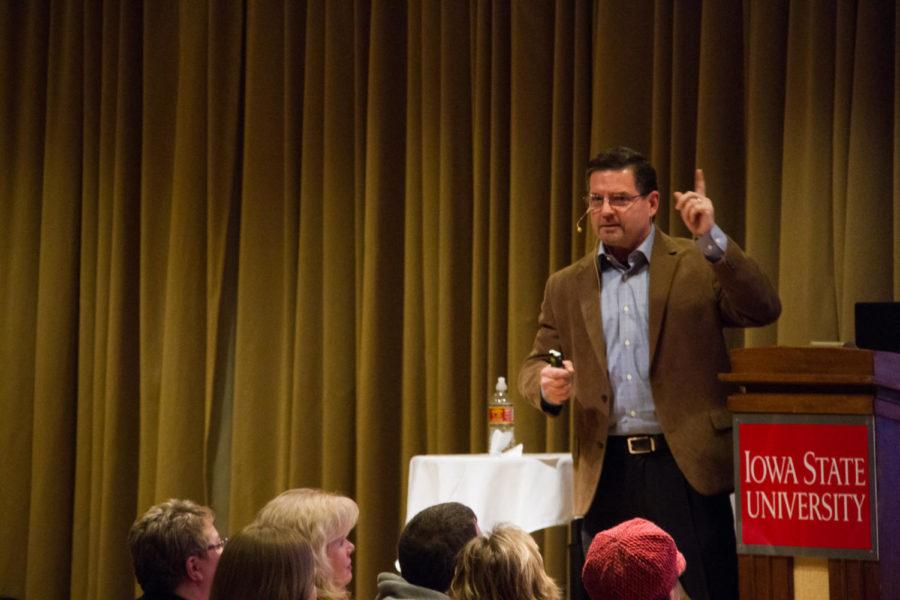Eating disorders expert details differences, symptoms
March 1, 2017
As part of Body Image and Eating Disorder Awareness Week, Buck Runyan spoke to an audience about eating disorders Wednesday night in the Sun Room of the Memorial Union.
Runyan is an executive director of Remuda Ranch, an in-patient/residential program for individuals with eating disorders in Wickenburg, Arizona. He has more than 20 years of background with eating disorders.
“[Eating disorders are] the most complex psychological disease known to man,” Runyan said.
His purpose for the evening was to debunk common misconceptions about eating disorders, provide the audience with helpful tools to handle the complex disease and give a legitimate definition to the term “eating disorder.”
The types of eating disorders that Runyan focused heavily on were anorexia, bulimia and binge eating.
People with anorexia restrict energy intakes, which ultimately leads to low body weight.
Bulimia involves intaking copious amounts of food, followed by vomiting, misuse of laxatives or excessive exercise.
Binge eating consists of losing control and overeating in short periods of time.
Runyan mentioned several psychological characteristics associated with eating disorders, including increased negative emotions, changes in personality, inflexibility in thinking and more stress.
Some of the physical characteristics Runyan acknowledged with eating disorders included low body weight, hair loss and dry skin.
“The body will eat itself, it needs to survive” Runyan said.
An unknown consequence of eating disorders to many is cerebral atrophy, which is decrement in the size of the brain, due to loss of carbs, which carries sugars that are used to fuel the brain.
“They may look normal, but their brain is severely impacted,” Runyan said.
Runyan emphasized the importance in knowing the signs of someone suffering from an eating disorder.
He said if you notice that someone is “nibbling” or chewing their food at an abnormally slow pace, there is a chance that this person could be suffering from anorexia.Typical signs that someone could potentially be bulimic are binge eating or eating at a rapid pace.
Red flags for eating disorders across the board are excessive exercise, fatigue, sleep disturbance, participating in other addictions such as laxatives or sexual promiscuity, and acting defensive if questioned about eating disorders.
“They are masters of avoidance,” Runyan said.
He explained that a common misconception is that eating disorders are “a white, rich girl’s disease,” when in actuality, statistics show that the rates of multicultural people who suffer from eating disorders are extremely similar to caucasians.
“Eating disorders do not discriminate,” Runyan said.
Contrary to popular belief, eating disorders are not the product of trauma or the “ideal” body images portrayed in the media.
Runyan explained that eating disorders act as endorphins to the body, relieving their victims of life’s stressors.
“They are addicted to endorphins,” Runyan said.
At the end of the lecture, Runyan answered questions from attendees regarding assistance in acknowledging someone that they know may have an eating disorder and emphasized the importance of knowing and acknowledging the warning signs.
“Come up with a plan from the heart,” Runyan said.
Representatives from Body Image and Eating Disorders Awareness Student Organization provided information on resources such as Student Counseling Services and the Body Project Training, which is a coalition of students and faculty trained in educating other student organizations on body image and eating disorders.
They also announced a new organization beginning next school year, Peer Wellness, which will have students promote overall health wellness on campus.







